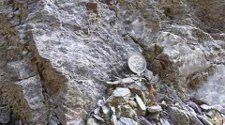
Quintessa has contributed to a thematic set of papers that describe results from the Tono Natural Analogue Project (TAP), which focused on the Tsukiyoshi uranium ore body in the Tono area of central Honshu, Japan.
These papers were published in January 2006, in Issue 17 of the journal Geochemistry: Exploration, Environment, Analysis.
The TAP was carried out in several phases between 1986 and 2005, initially by the Power Reactor and Nuclear Fuel Development Corporation (PNC) and subsequently by the Japan Nuclear Cycle Development Institute (JNC; since November 2005 part of the Japan Atomic Energy Agency). The papers in the thematic set describe research carried out during the latest phase of the TAP, between 2001 and 2005. A novel aspect of the work was to apply Performance Assessment (PA) methodologies to understand the evolution of the Tsukiyoshi uranium ore body. The main aims were to :
(1) develop improved methodologies for integrating varied information from field studies in a way that is useful for PA;
(2) develop PA models that could take into account continuous variations in environmental conditions.
Instead of developing scenarios for possible future site conditions, as would be done in a conventional PA, alternative scenarios for the past evolution of the deposit were constructed, based on extensive field and laboratory data. Systems analysis was used to develop a 'reference scenario'. This scenario is a best estimate of how the geological system and the uranium deposit reached their present states and includes descriptions of all major environmental perturbations, including uplift, subsidence and faulting. A numerical model was specially designed using Quintessa's Ozone code and used to simulated the main features of the scenario. Many simulations were performed to identify the main uncertainties to which the timing of ore deposition and uranium distribution are sensitive. A key finding is that retardation of U by processes other than precipitation of discrete U minerals, most probably sorption on solid phases, contributes significantly to the stability of the ore deposit. Sorption could potentially be important for confining the U within the sedimentary rocks in spite of environmental changes such as exhumation and seismic pumping. The approach could be used elsewhere, to assess the safety of deep geological high-level radioactive waste (HLW) disposal.
Full details of the numerical modelling approach can be found in:
Metcalfe R, Takase H, Sasao E, Ota K, Iwatsuki T, Arthur R C, Stenhouse M J, Zhou, W. and Mackenzie, A B (2006) A system model for the origin and evolution of the Tono Uranium Deposit, Japan. Geochemistry: Exploration, Environment, Analysis, 17: 13-31.
All papers can be accessed through: http://geea.geoscienceworld.org